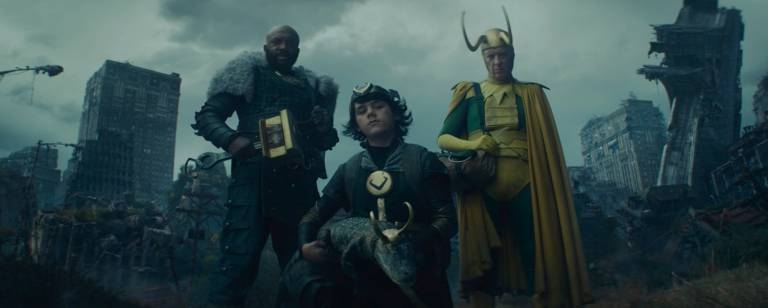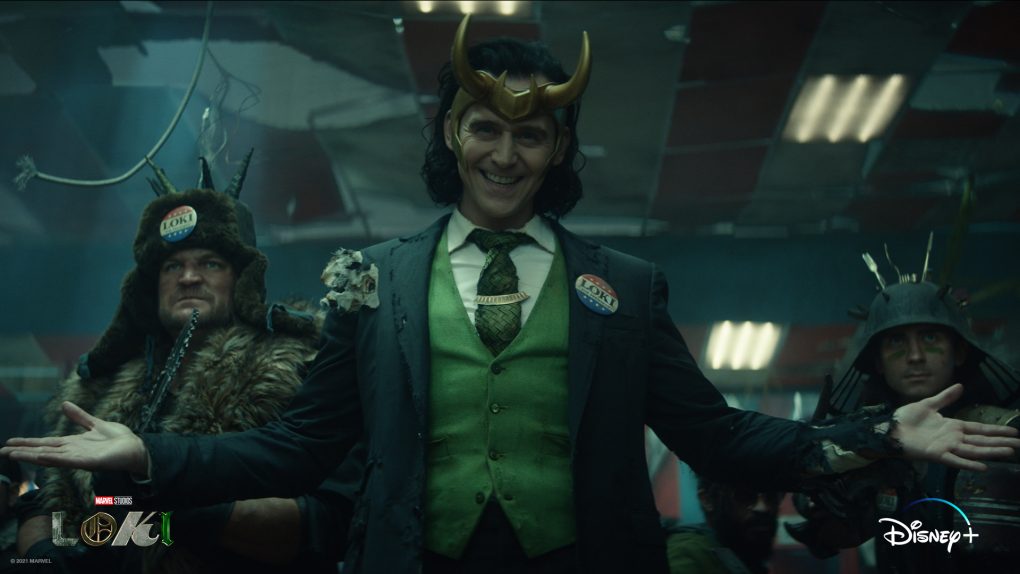Loki
episode 4 is easily the best episode of any Marvel TV show released to date. Tom Hiddleston teased as much before the show’s premiere, singling out episodes 4 and 5 when asked which are the show’s best. The first Loki post-credits scene dropped after the episode, something we also expected. Credits scenes are signature features for Marvel’s MCU movies, but it’s more challenging to pull them off in TV shows. We were trained in WandaVision and The Falcon and the Winter Soldier to expect post-credits scenes only in the second half of the season. That’s why Loki episode 4 seemed like the right candidate.
It turns out the first Loki credits scene isn’t only important for the show itself. Marvel might have preemptively fixed a significant problem with Spider-Man: No Way Home and future Avengers films with just a few seconds of footage placed at the end of a fantastic Loki episode. We’ll explain everything, but first, the usual spoiler warning: Major Loki and Spider-Man 3 spoilers follow below.
The multiverse conundrum
When No Way Home premieres this winter, we’ll get to see three Spider-Men working together for the greater good. The main Spider-Man continues to be Tom Holland in the MCU, but Tobey Maguire and Andrew Garfield will reprise their roles from Sony’s Spider-Man films that preceded the MCU. That’s what all the rumors have said, and the rumors are probably correct.
Spider-Man 3 must be a multiverse film because both Marvel and Sony need it. Marvel began exploring the multiverse concept with Doctor Strange, the Ant-Man movies, and Avengers: Endgame. Sony needs Tom Holland’s MCU connection to sell its own universe of Spider-Man stories based on the movie rights it controls.
In Endgame we found out that time travel works differently in the MCU than in other movies. Our beloved Avengers did not change the past. They got to interact with other realities to steal the Infinity Stones. And Loki tells us how the TVA must have reacted to most of the Nexus events spawned by the Time Heist in Endgame.
Endgame also showed that alternate versions of our Avengers were identical to the main characters. They looked the same. But No Way Home will give us three different Spidey versions.
Before the Loki post-credits revelation
Thankfully, Loki has already started to address the matter. Sylvie (Sophia Di Martino) is the first variant that made us realize not all versions of the same character will look the same. Sylvie is a Loki taken from Asgard as a child. That’s what we learned in episode 4 long before Loki’s first post-credits scene dropped. She’s a female, and she looks nothing like Hiddleston.
A theory a couple of episodes ago had suggested that Sylvie might not originate from the Sacred Timeline. That’s because we saw all sorts of Loki versions in episode 2 that all looked like Hiddleston. Sylvie wasn’t like them. That episode planted the seeds. Not all variants of the same character will look identical. There will be some variance, which is yet to be explained.
Actually, as long as there’s some variety, we don’t really need an explanation. It’s easy to speculate that some sort of Nexus event might have impacted the course of events in some realities. This might have created Loki variants who don’t look like our Loki. The same explanation would apply to other characters.
Not to mention that Marvel is looking for more diversity in the MCU, and Loki already helps with that. The show has just confirmed Loki’s sexuality.

The first Loki post-credits scene
This brings us to the Loki post-credits scene in episode 4 that gives us even more variety. In just a few seconds of footage, we see four versions of Loki on the screen. And one of them is a reptilian Loki. They’re all living in this post-apocalyptic world where pruned variants are sent. They’ve all had to face the TVA at some point, and they were all wiped from existence.
Marvel credits all of the characters, which is another confirmation that all of these are Lokis: Classic Loki (Richard E. Grant), Boastful Loki (Deobia Oparei), and Kid Loki (Jack Veal). So there’s no question about them — they’re all Lokis.
That puts an end to any debates about the Spider-Man versions we’re about to see in No Way Home. Not to mention that Marvel might employ other actors to play beloved Avengers in the future. This Loki post-credits scene explains that sort of variation. Maybe you don’t need to bring back Robert Downey Jr. for an Iron Man hailing from a different reality. Maybe you do get Tom Cruise onboard for an amazing cameo.
Not another Infinity War cliffhanger
The episode 4 credits scene serves other purposes, some more immediate than others. The scene tells us that Marvel will not go for the low-hanging cheap cliffhanger a second time. When Mobius (Owen Wilson) died early in the episode, I thought he couldn’t be dead, forgetting that Loki’s magic doesn’t work at the TVA. Then I thought episode 4 is all the more impressive for killing a central character like that.
But when Ravonna (Gugu Mbatha-Raw) pruned Loki, I realized that not only is Loki alive, but Mobius should also be alive. The post-credits scene makes that clear.
It would have been amazing to leave the audience hanging for an entire week. But you can’t kill a character to bring him back in the next installment. Marvel already did that with Infinity War and Endgame. Repeating the same trick is just cheap.
Finally, the Loki post-credits scene opens the door to more Loki adventures that may or may not include Tom Hiddleston.
We’ll see all these Lokis in action soon, as Loki episode 5 premieres on Disney+ next Wednesday.








